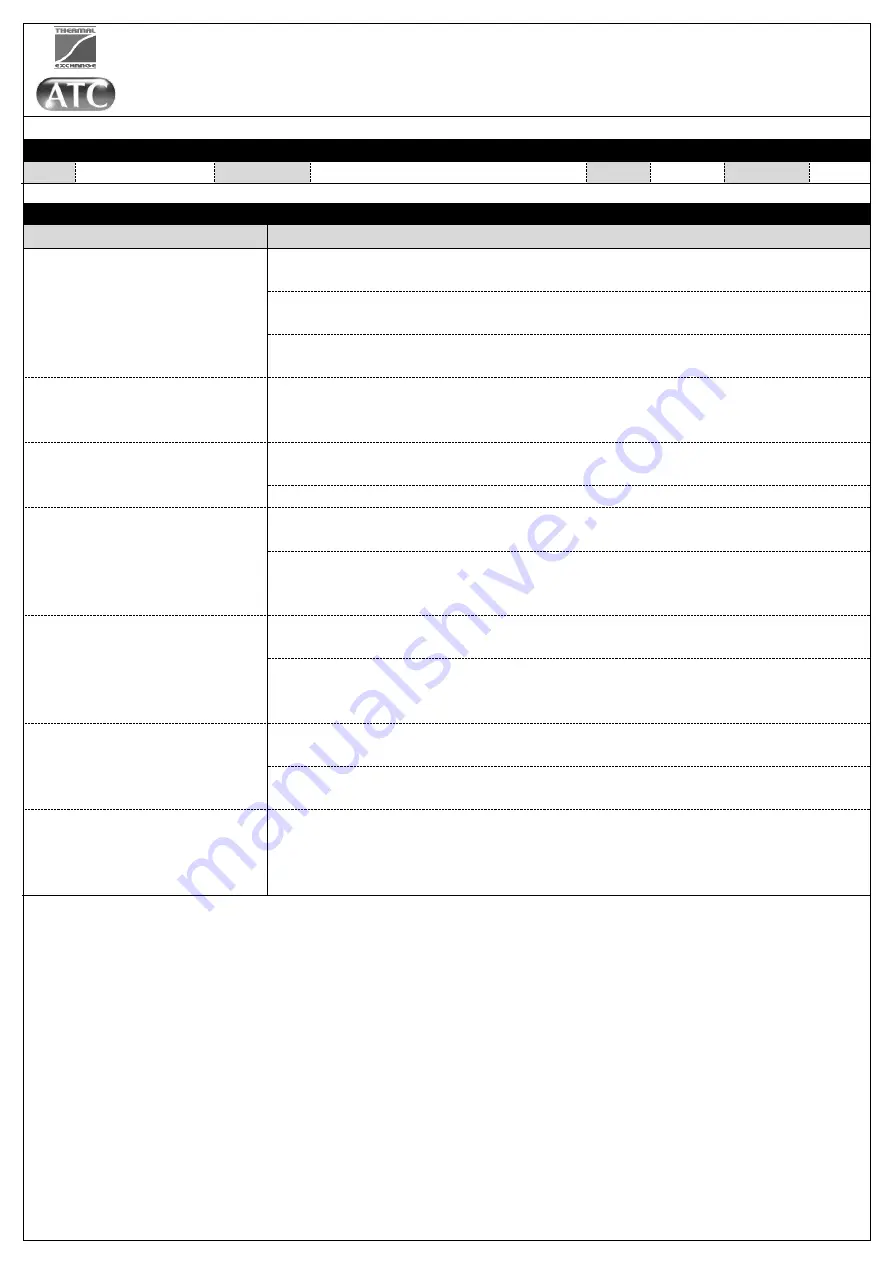
Applied Thermal Control Ltd
39 Hayhill Industrial Estate
Barrow-upon-Soar, Loughborough
LE12 8LD, United Kingdom
+44 (0) 1530 839 998
[email protected]
[email protected]
Operating Manual; Troubleshooting
Annex G-1
DOCUMENT DETAILS
Date 29/NOV/2019
Author(s) MJH
Page 1 / 1
Revision 1
MINI GENERIC INITIAL TROUBLESHOOTING
Symptom
Potential Cause(s)
Compressor not running
Check the connection of the compressor power plug situated on top of the
compressor itself.
Check the connection of the signal line from the controller to the compressor
PCB control board.
The compressor has built-in logic issued via its PCB control board
– board error
states are communicated to the main touchscreen controller.
Noisy operation
Usually bearing failure in rotating machinery causes noise
– this might be the
cooling fan, the compressor or the pump. Pay attention to specific components
to identify the source of noise.
Fluid lines becoming fouled /
containing biological matter
Not using opaque tubing can lead to UV light passing through the tubing,
prompting growth of organisms.
Not following maintenance schedule for cleaning/flushing.
Fluid seen leaking from system
Your fluid may be incompatible with the materials used in chiller construction.
Contact ATC to ensure the fluid is compatible.
Rapid changes in system temperature can cause some materials to change
shape at a faster rate than others. Contact ATC to discuss alternative materials
and parts in water circuit construction.
Poor cooling capacity
(undercooling)
Check for any error states on the compressor
– the controller will indicate if an
error has occurred
– tapping to clear will allow refrigeration to continue.
This can be caused by 1) excess application thermal heat load, 2) excess
ambient temperature, 3) fan failure, or 4) controller issues with fan speed or
compressor control.
Excess cooling capacity
(overcooling)
Check behavior of heating solenoid valve
– if no power reaches the coil, or if it
jammed closed, cooling may continue to occur.
Check value that system seeing for ‘OUT’ liquid temperature. A value reported
that is higher than actual will force the system to cool without need.
Following period of being
powered-down, chiller no
longer retains correct time and
date settings.
When no mains power is provided to the chiller, a PCB-mounted button cell is
used to power the real time clock (RTC).
This is a lithium cell with Panasonic part number BR-1225/BN. The item is UL-
approved under file number MH12210. ATC provide approved replacements.
Annex G-1 191129 Mini, generic initial troubleshooting
20
















































